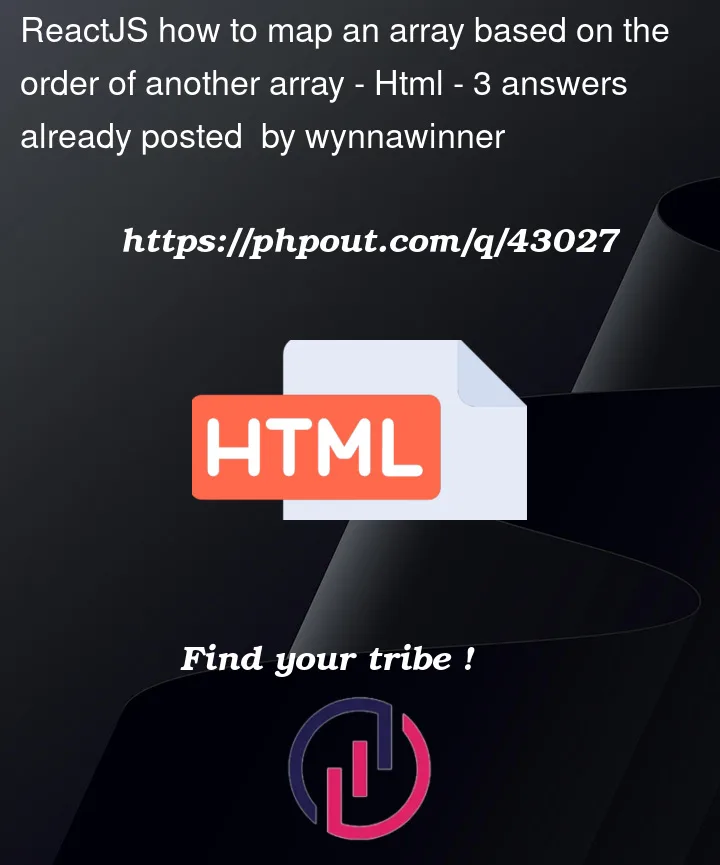The answer in Unmitigated helped me, if you are searching from google scroll down
order:
[ "567", "645", "852", "645", "852", "852", ]
database:
[ { "userId": 567, "userName": "tjk23", "department": "Sales", "remarks": "" }, { "userId": 645, "userName": "gfn23", "department": "Sales", "remarks": "" }, { "userId": 852, "userName": "dan24", "department": "Sales", "remarks": "", } ]
Currently it’s mapping fine with the database array, but only displays 3 of the DisplayCard. I need it to display 6 times and also in the order of the 6 in order array
{database.map((data, index) => { return <DisplayCard data={data} key={index}/> })}
How do I make it map using the sequence of the order array without changing too much code? As the DisplayCard is used in multiple places I would like to not modify it
I tried using
{order.map((database.data, index) => { return <DisplayCard data={database.data} key={index}/> })}
and expected it to use the sequence of the order array, and get the data from the corresponding userId in the database array
But what actually resulted is an error but I don’t know why
Edit for Unmitigated:
Here is a minimally reproducible example, I removed the API call and external DisplayCard reference and have everything fit into this snippet
export function Minimal() {
var lookup;
const order= [ "567", "645", "852", "645", "852", "852", ];
const database = [ { "userId": 567, "userName": "tjk23", "department": "Sales", "remarks": "" }, { "userId": 645, "userName": "gfn23", "department": "Sales", "remarks": "" }, { "userId": 852, "userName": "dan24", "department": "Sales", "remarks": "", } ];
function DisplayCard({data}) {
return <div>{data.userId}</div>;
}
return (<>
{database?.length > 0
? lookup = Object.fromEntries(database.map(o => [o.userId, o]))
(
<>
{order.map((userId, index) => {
return <DisplayCard data={lookup[userId]} key={index} />
})}
</>
) :
(
<div className="empty">
<h2>No records found</h2>
</div>
)}
</>)}




3
Answers
You can create an object that maps each
userIdto an object in the array, then access the values from this lookup object when usingorder.Example:
What you really want is not map, it’s a filtering on database array. The map method is not used like you are thinking see definition: https://developer.mozilla.org/en-US/docs/Web/JavaScript/Reference/Global_Objects/Map
I strongly believe that this is a way without changing too much code
Step 1: Filter database array according to the ids on order array
Step 2: Now you can use the database array filtered